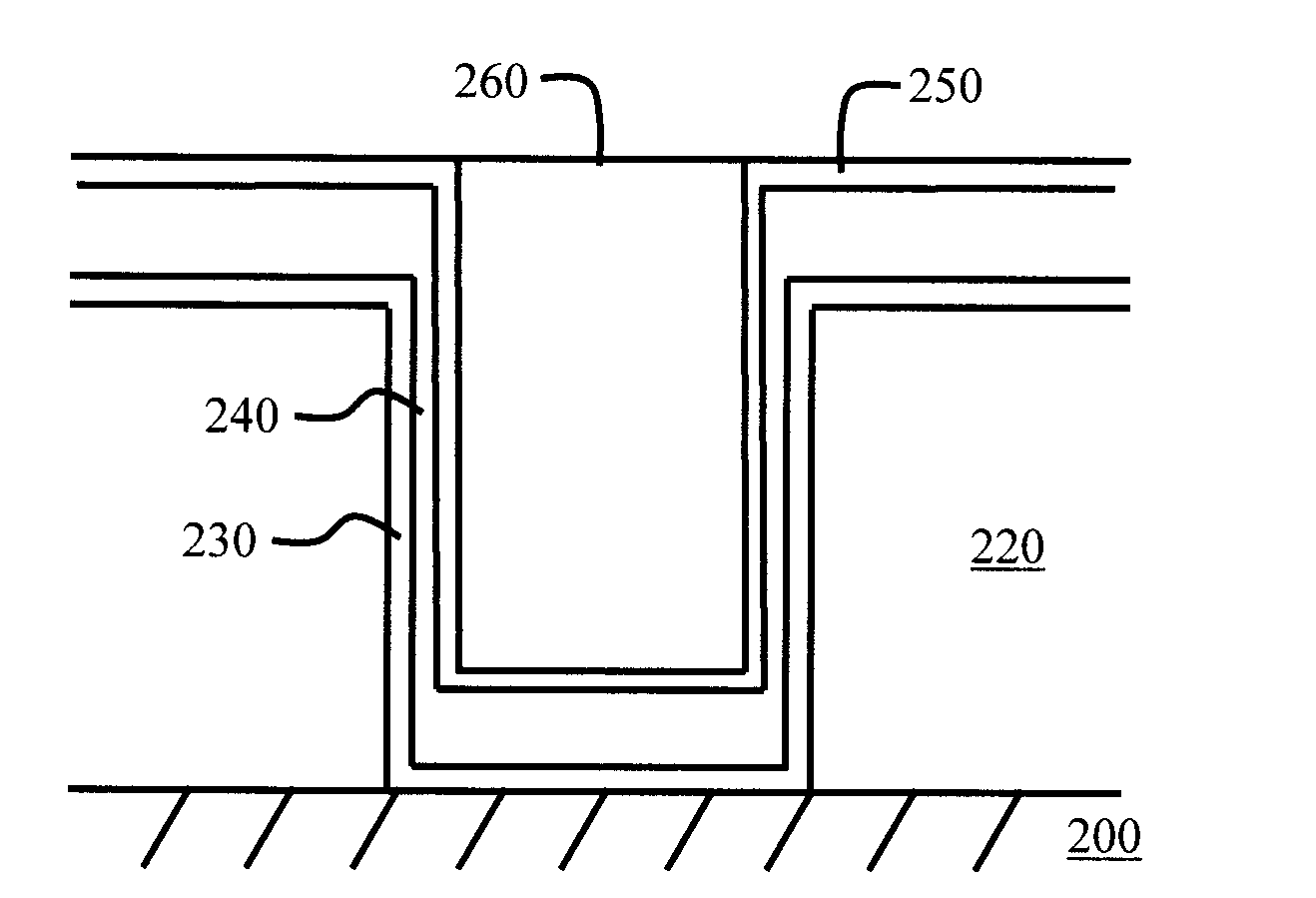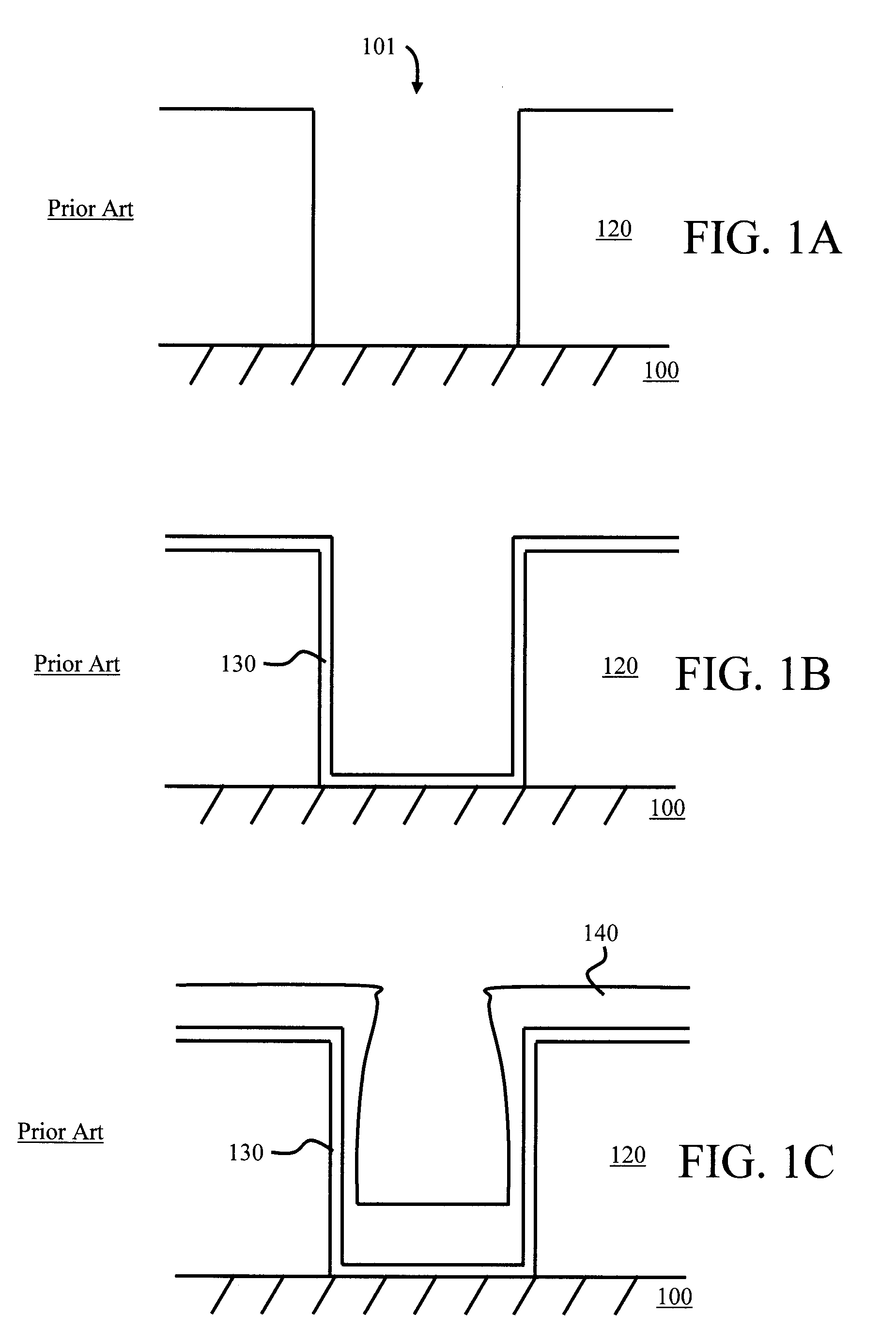Structure to Facilitate Plating Into High Aspect Ratio Vias
a technology of high aspect ratio and structure, applied in the direction of semiconductor devices, semiconductor/solid-state device details, electrical apparatus, etc., can solve the problems of increasing the difficulty of fabricating vias, unable to meet the current the conventional fabrication process cannot keep up with the currently desirable scaled feature sizes, etc., to achieve the effect of improving the quality of high aspect ratio vias and techniques
- Summary
- Abstract
- Description
- Claims
- Application Information
AI Technical Summary
Benefits of technology
Problems solved by technology
Method used
Image
Examples
Embodiment Construction
[0012]FIGS. 2A-D are cross-sectional diagrams illustrating an exemplary via fabrication process. As shown in FIG. 2A, dielectric layer 220 is deposited over substrate 200. Dielectric layer 220 can comprise any suitable dielectric material, including, but not limited to, one or more of silicon dioxide (SiO2), silicon-carbon-oxygen-hydrogen materials (e.g., SICOH) and organic polymers, and can be deposited using any suitable deposition process, such as chemical vapor deposition (CVD), atomic layer deposition (ALD), evaporation, sputtering or solution based techniques, such as spin-on coating, to a thickness of from about 10 nanometers (nm) to about 1,000 nm. Substrate 200 generally represents any wiring or contact layer in a single or multilayer wiring array. High aspect ratio via 201 is then etched into dielectric layer 220, using any suitable etching process, such as reactive ion etching (RIE). According to one exemplary embodiment, high aspect ratio via 201 is etched into dielectri...
PUM
| Property | Measurement | Unit |
|---|---|---|
| thickness | aaaaa | aaaaa |
| thickness | aaaaa | aaaaa |
| thickness | aaaaa | aaaaa |
Abstract
Description
Claims
Application Information
 Login to View More
Login to View More - R&D
- Intellectual Property
- Life Sciences
- Materials
- Tech Scout
- Unparalleled Data Quality
- Higher Quality Content
- 60% Fewer Hallucinations
Browse by: Latest US Patents, China's latest patents, Technical Efficacy Thesaurus, Application Domain, Technology Topic, Popular Technical Reports.
© 2025 PatSnap. All rights reserved.Legal|Privacy policy|Modern Slavery Act Transparency Statement|Sitemap|About US| Contact US: help@patsnap.com



